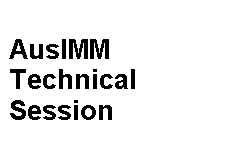Topic : The Bottom of the Harbour and Bass Canyon Revealed Using Swath-Mapping Data and Fledermaus Visualization
Location : The Rugby Club, 31A Pitt Street, CBD
Time : 14th May 2003, 5.30 for 6.00 pm
Speaker : Jock Keene, Associate Professor, School of Geosciences, University of Sydney
Please Note: Complimentary beer, wine and snacks will be provided
Attendance may be credited towards AusIMM or IEAust CPD requirements
Obtaining realistic images of the sea floor around Australia remains elusive. Recently this has been addressed on parts of the continental slope by employing swath-mapping capability of French and U.S. research vessels. The SeaBeam 2000 aboard the RV Melville is a 12 kHz, 121-beam swath-mapping system and was used to map the deep water Gippsland Basin over a period of 53 hours in March 1997. This enabled almost complete coverage of depths between 2000 to 4000 metres and in the south and west extended up to less than 1000m. The survey extended out onto the abyssal plain and depths of 4400m. The overall dimensions of the area mapped are 100×80 km resulting in coverage of approximately 8,000 sq km. The French research vessel L’Atalante has added to area mapped. Funding has recently been obtained to install a swath-mapper on our National Facility RV Southern Surveyor.
These data sets have enabled follow up sampling cruises, for the first time, to carry out pinpoint sampling to ground-truth sedimentary environments and map erosional features. The basin margin is revealed as a complex mix of erosion (canyons and mass wasting) and deposition on both the continental slope and in the canyon floor. The submarine topography is well illustrated with a fly-through using high-end graphics work stations (VisLab, Sydney University) with visualisation software (fledermaus â, see http://www.ivs.unb.ca/). This has enabled perspectives of submarine topography not easily envisaged by other means. Slumps, channels, fault scarps, debris flows and outcropping sedimentary strata are readily identifiable. When overlaid with an acoustic backscatter map the high returns highlight the location of sands, debris flows in the floor of channels and dewatering on the slopes.
The modern continental slope located in the offshore Gippsland Basin is clearly of two types, reflecting bedrock trends and erosion/deposition history. The western slope at the head of the main canyon (Bass Canyon) is a unique feature of the area, with a steep slope falling from 800m to 1800m in 4km, and consisting of a uniform series of parallel ridges and runnels. There are some 40 ridges and runnels over a distance along slope of 40km. Each of these runnels is 50-150m deep and has relatively smooth sides and floor, running directly down slope. They most likely formed during sea level lowstands and are now draped with a veneer of hemipelagic sediment. To the south there is a broad uniform continental slope, gently rising from the Bass Canyon floor at 3000m to the shelf edge some 80km to the south-west. Backscatter image and isobaths define low parallel ridges, trending roughly east-west, over large areas of this slope. Three 60-70km long canyons cut this slope. The canyons are relatively narrow, 500-800m wide, and 150-200m deep with flat floors. Over short distances they are incised over 500m and are still only a kilometre wide. They are boxed-shaped in cross section with rock outcrop on the sides. They meander and have levees and terraces.
The Navy is currently swath-mapping areas of the continental shelf off northern Australia but it is a slow process. The Californian margin provides an excellent example of what is possible with detailed sea floor mapping (see http://walrus.wr.usgs.gov/pacmaps).
Next Technical Session on 11th June 2003 will be held at the Rugby Club in Pitt Street at 5.30 for 6.00 pm. For further information on this and other presentations in the Sydney Branch Technical Meetings Programme you may contact Ed Thomas: edthomas@optusnet.com.au or ph/fax 9522 8810.

